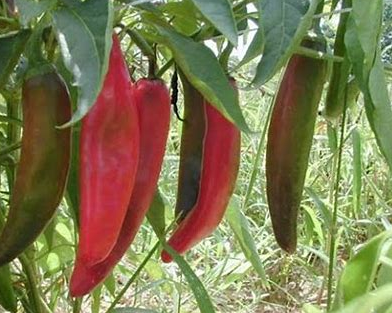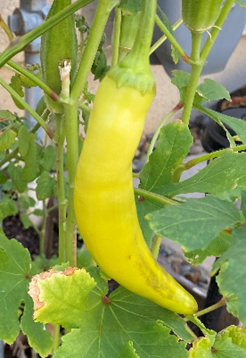- Author: David Bellamy
As summer begins to wind down, hot peppers are ripening in the garden. Some gardeners will want them to be hotter, and others prefer less heat. Are there things you can do to shift their rating on the Scoville Heat Units (SHU) scale? Maybe, but there are a lot of myths as well.
When it comes to the scale, most of you have seen it and may have been surprised at the variation. Here are a few peppers you have heard of and how they rate.
- Sweet pepper:
- Jalapeños: 2500 – 8000 SHU
- Habaneros: 100,000 -580,000 SHU
- Ghost peppers: > 1,000,000 SHU
- Carolina Reaper: 1.5 – 2.2 million SHU
Capsaicin (pronounced “cap SAY sin”) is one of a group of chemicals called Capsaicinoids and is the source of the hotness in peppers. Capsaisin has no flavor or odor itself but acts on the mouth's pain receptors. The venom from some tarantula species activates the same chemical pathway as capsaisin.
Here are some myths about pepper hotness.
1. “The seeds are the hottest part; get the seeds out and it won't be so hot.” If you do not like the heat, don't fall for this one. Capsaisin is the heat causing ingredient and there is almost none of it in the seeds. However, the highest concentration of capsaisin is in the white pithy parts around the seeds, and some of it might rub on to the seeds from being next to that membrane inside the seed.
2. “You can tell how hot peppers are by looking at them. Hotter peppers point up and cooler peppers hang down.”WRONG, This statement may be true for some peppers, such as bell peppers, but it not a rule. For example, ghost peppers and jalapeños hang down and are extremely hot.
3. Growing hot peppers next to sweet peppers will allow them to cross-pollinate and this will cause the hot peppers to be milder. NO. Cross-pollination with other peppers will not make hot peppers hotter. If you saved the seeds and grew them the next year you could come up with some different traits, which may or may not be desirable.
4. Let them age on the plant and they will be hotter. NO. Research shows peppers will increase capsaisin levels as they mature until about 40-45 days, which is when it stops growing in size. After this point, some, like Serrano peppers will stay the same hottest from green to yellow and to red. Others, like Cayenne peppers, will actually reduce the amount of capsaisin levels after 45 days.
5. Adding Epsom Salt around the base of the plant will make them grow hotter. NO. Epsom salt will give the plant a big boost of magnesium and stimulate growth, but there is no scientific evidence that it has any effect on a pepper's hotness.
6. Strike a wooden match and extinguish it and place it in the soil next to the plant or at the bottom of the planting hole when planting the pepper. NO. There is no research-based evidence this will make hotter peppers. The burnt match head will contain sulfur, and sulfur will give some plants, such as onion, an acrid taste. It does not change the capsaisin level in the pepper plant. There is no sulfur in the chemical formula for capsaisin.
For more information on growing hotter peppers, see:
https://www.gardenmyths.com/growing-hotter-peppers/#more-7178
Photo information:
Image 1: 3 Big Bertha Bell Peppers
https://www.bing.com/images/search?q=Big+Bertha+Pepper+Plant&form=IDINT
Image 2: Group of Anaheim Peppers
https://i.ytimg.com/vi/LGMqZCa_GQ8/hqdefault.jpg
Image 3: Banana Pepper Hanging Out with Okra, Photo by D.Bellamy






